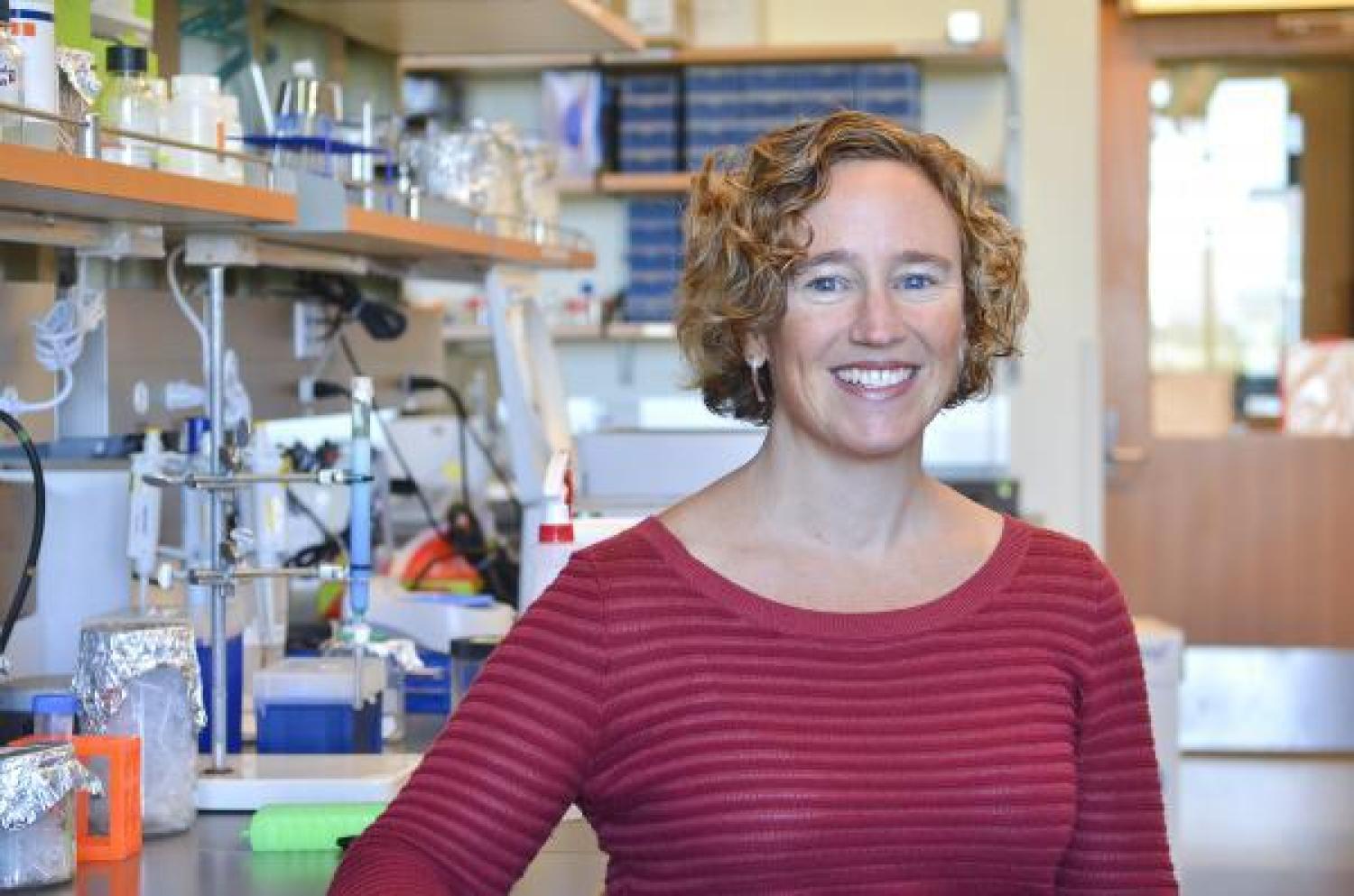Amy Palmer
- Professor
- Director of the Arts and Sciences Honors Program

Office: JSCBB C317
Lab: JSCBB C381
Lab Phone: 303-492-8356
Fax: 303-492-5894
Education
Bachelor's: Chemistry, Dartmouth College, 1994
Master's: Education, Stanford University, 2000
PhD: Biophysical Chemistry, Stanford University, 2001
Postdoctoral Fellow: NIH Postdoctoral Fellow University of California San Diego 2001 - 2005
Areas of Expertise
Bio-Analytical Chemistry, Bio-Inorganic Chemistry, Cell Signaling, Chromatin, Gene Expression and Regulation, Genetics and Chemical Biology, Molecular Biophysics, Neuroscience and Neurodegenerative Disease, Infectious Disease, and Single Molecule Biology.
Awards and Honors
- 2021 Center for Light Sheet Microscopy and Data Science Award, Beckman Foundation
- 2019 University of Colorado, College of Arts and Sciences Faculty Fellowship Award
- 2017 Marinus Smith Award, University of Colorado Boulder
- 2016 Chancellor's Award for Excellence in STEM Education, University of Colorado Boulder
- 2016 ASSETT Faculty Development Award, University of Colorado Boulder
- 2014 NIH Director's Pioneer Award
- 2013 Human Frontiers Science Project Program Grant Awardee
- 2010 NSF CAREER Award
- 2010 Alfred P. Sloan Foundation Research Fellow
- 2010 Ed Stiefel Young Investigator Award in Biological Inorganic Chemistry
- 2007 Whitehall Foundation Award
Chemical biology, biosensor design, imaging of signal transduction pathways
Our research lies at the interface of chemistry and biology, where the application of chemical and physical principles provides a unique opportunity to better understand the fundamental biochemistry of living cells. Living cells are complex and dynamic entities that must integrate internal and external signals in order to coordinate diverse functions. Deciphering the molecular details of how cellular constituents define healthy and diseased states, and how dynamics propagate from the cellular to the organismal level, is one of the great challenges in modern biology. We develop fluorescent tools to image living cells and tackle this grand challenge. For more information on active research projects, please visit our lab webpage.
A powerful complement to these cellular studies are spectroscopic and biophysical methods (absorption, circular dichroism, electron paramagnetic resonance, fluorescence, fluorescence anisotropy, stopped-flow, and surface plasmon resonance) that provide detailed information on the bonding nature, kinetics, and thermodynamics of protein-metal, protein-small molecule, and protein-protein interactions.
Specific projects in the lab include 1) the development of genetically encoded zinc sensors and examination of the role of zinc in neuronal signal transduction, 2) the design of peptide-based tools to perturb protein-protein interactions, and 3) development of probes to study the connection between amyloid-beta and calcium dysregulation.
See my NCBI bibliography for a full and up-to-date list
- Rakshit, A., Holtzen S.E., Lo, M.N., Conway, K.A., Palmer, A.E., Human cells experience a Zn2+ pulse in early G1, Cell Reports, 2023, 42(6): 112656, doi: 10.1016/j.celrep.2023.112656
- Pratt, E.P., Anson, K.J.*, Tapper, J.K.*, Simpson, D.M., Palmer, A.E., Systematic comparison of vesicular targeting signals leads to the development of a genetically-encoded vesicular fluorescent Zn2+ and pH sensor, ACS Sensors, Dec 24;5(12):3879-3891. doi: 10.1021/acssensors.0c01231
- Lo, M.N., Damon, L.J., Wei Tay, J., Jia, S., Palmer A.E., Single Cell Analysis Reveals Multiple Requirements for Zinc in the Mammalian Cell Cycle, eLife, Feb 4;9. pii: e51107. doi: 10.7554/eLife.51107
- Braselmann, E., Wierzba, A.*, Polaski, J.T.*, Chromiński, M., Holmes, Z.E., Hung, S.-T., Batan, D., Wheeler, J. R., Parker, R., Jimenez, R., Gryko, D., Batey, R.T., Palmer,A.E., A multi color riboswitch-based platform for live cell imaging of RNA in mammalian cells (* these authors contributed equally to this work); Nature Chem. Bio., 2018, 14(10):964-971


